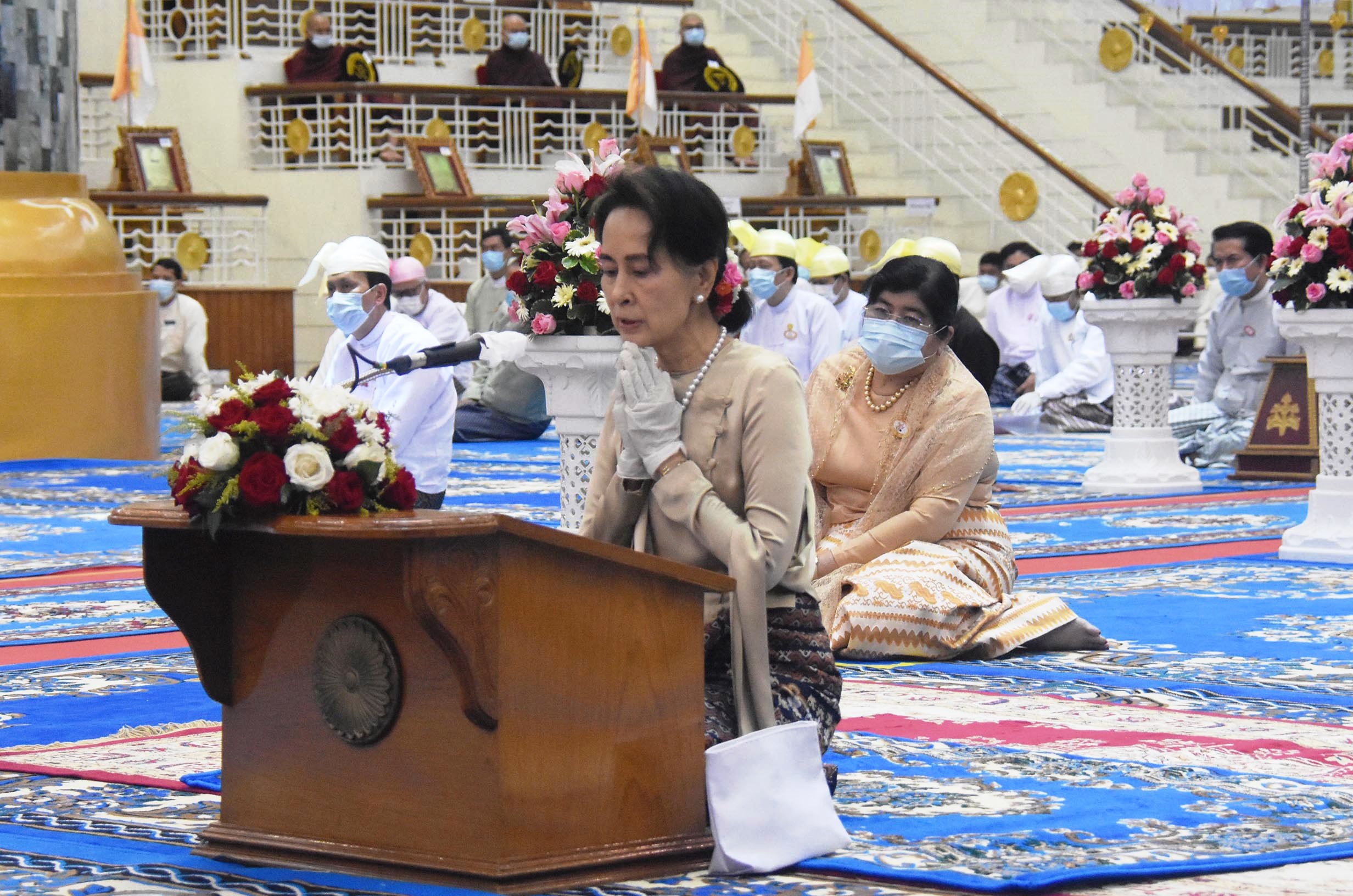July 21, 2020
Most respected venerable monks,
May I first express my delight, in accordance with the 29th stanza Samana Dassana that says it is auspiciousness to see the holy monks in the 38 Highest Blessings (Mingala Sutta), to pay homage to the State Sangha Maha Nayaka Committee Sayadaws led by Chairman of this committee, Sayadaws of Tipitakadhara Tipitaka Kovida Selection Board, senior Tipitakadhara Tipitaka Kovida Tipitakadhara Dhamma Banttagarika monks, the exam assistance Sayadaws and the title-winning monks in this Maha Passana Cave where the Sixth Buddhist Council was held.
Most respected Sayadaws,
Although the Buddha attained parinibbana over 2,500 years ago, the teachings of ultimate truths to human beings remain unchanged thanks to the venerable Buddhist monks.
Among the monks who learned the treatises of Buddha by heart and the meanings, the efforts of Buddhist monks in Myanmar on the perpetuation of Pariyatti and Patipatti are still gaining momentum. The good-wishes and generosity of the Myanmar people who have supported the Sangha with the four requisites are still strong and for this, I am very much encouraged.
The treatises of Pitaka were recorded on palm-leaves at the 4th Buddhist Council during the reign of King Wattagamani in Sri Lanka in Sasana Era 450 (BC 93), on the stone inscription at the Fifth Buddhist Council under the patronage of King Mindon in Sasana Era 2415 (1871) and put to print at the Sixth Sangha Council in concurrence with Sasana Era 2500 just after the country gained its independence.
The Tipitakadhara Tipitaka Kovida Selection Exam has emerged along with the independence of the country in 1948 to generate the learned monks who can recite the three canons of Pittaka by heart, and the exam has been held 72 times.
In addition, the exam is also a legacy of the Six Buddhist Council, and it is very fitting to hold the congratulatory ceremony of this exam at the Maha Passana Cave which was the venue of the Sixth Buddhist Council.
The significant features and miracles of this exam include it was held annually without failure and only 15 monks, such as Tipitakadhara Dhamma Banttagarika Mingon Sayadawgyi Ashin Viccitasara Bhivamsa who was the first winner of this exam, have passed it in 72 years.
This year’s winner for this exam is Ashin Panna Vamsa Bhivamsa (Kyaukpadaung Sayadaw) from Tipitaka Maha Gandawin Nikaya Monastery in Dagon Myothit (East) Township, Yangon. He passed the two versions of exam—the references and the logics of treatises— this year and has become the 15th winner monk of the exam. I am very honoured and pleased to have this opportunity to pay respects to the learned Sayadaw.
Most venerable monks,
Buddha had two chief disciples, namely Ashin Moggallana and Ashin Śāriputra, in his lifetime. They were regarded as the left-hand and right-hand disciples of the Buddha respectively. The first one had very high supernatural power and the second one had the depth of knowledge wisdom. Recognizing Ashin Śāriputra as the right-hand disciple, Buddha had more regard for wisdom than for power.
The Tipitakadhara Tipitaka Kovida Selection Exam and its congratulatory ceremony have been organized for 72 times since 1948, and the efforts of venerable monk on the propagation of Buddha Sasana are well appreciated.
In conclusion, may I express my good wishes for the three branches of Sasana in the following verse: –
‘In comparing lotus, water and embankment, if Pariyatti is strong like an embankment, Patipatti will exist in it like water, and then Pativedha, as a golden lotus, will flourish, in terms of three branches of Sasana that will perpetuate for 5,000 years’.(Translated by Aung Khin)


